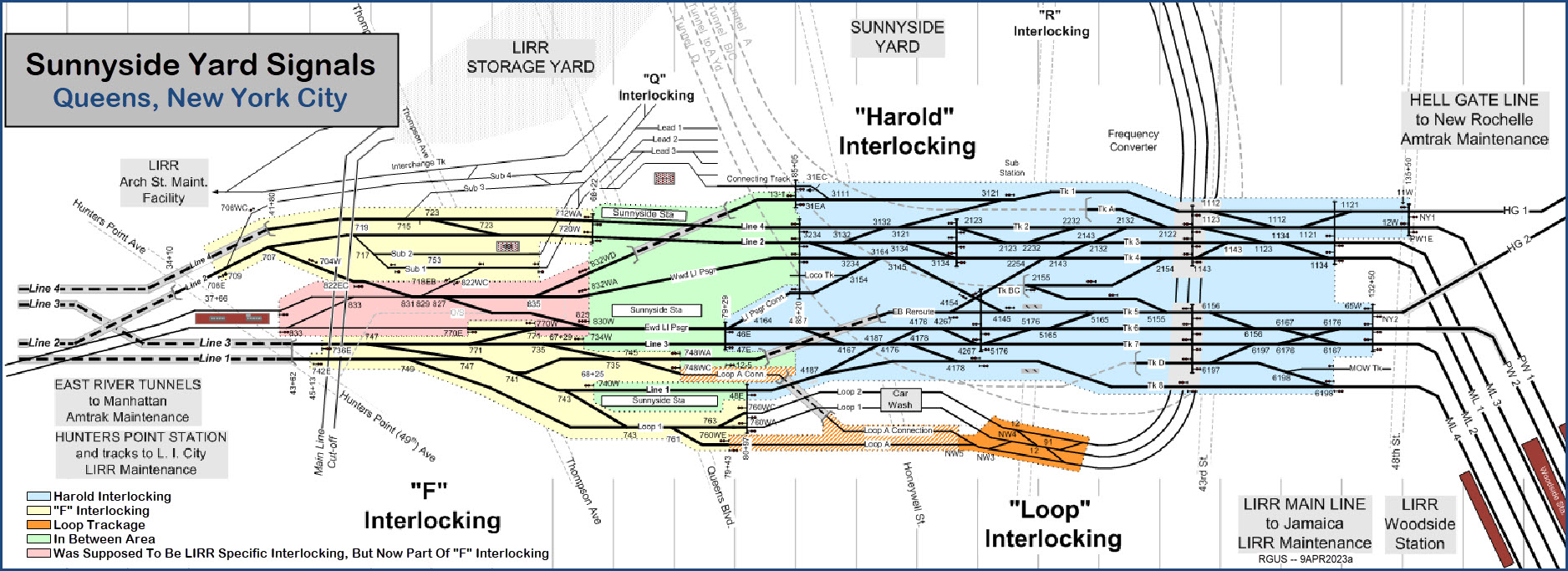jis
Permanent Way Inspector
Staff member
Administator
Moderator
AU Supporting Member
Gathering Team Member
After mentioning the Harold Bypass earlier in another thread, I got curious about whatever happened to this project started in 2013. What I discovered left me in such a state of disbelief that I had to go back and read the material from the NEC Commission Project Status Reports a couple of times to make sure I was reading about the project I thought I was reading about
After a whole afternoon's worth of research and reading many dozens of pages of project status documentation from the NEC Commission I discovered that the bypass track project the construction on which started in 2013, finally stalled in a few years because LIRR and Amtrak could not agree on a schedule. It took them some four years to finally come to an agreement. Meanwhile the project cost grew year by year, and of course there is absolutely no one who is responsible individually for any of it. Constructions started again in 2020 at a slow pace, and now it is expected to be fully completed by 2025.
So it will take all of 12 years to complete a few miles of track and two duck unders, of which seven of those twelve years consisted of doing mostly nothing other than to watch the cost grow. Typical MTA. It is ostensibly an add-on to the the ESA project.
Its is funded through HSIPR. ARRA and local + Amtrak funds. The total cost now stands at $1.4 Billion with a capital B, and includes some additional changes to the Sunnyside Loop tracks and a bunch of building demolition in Sunnyside Yard and relocation of the Amtrak car wash. Allegedly it is now fully funded and work continues. This year they will get around to ordering parts for the westbound track, and they hope to get the eastbound bypass commissioned next year, and get the westbound done by 2025.
After a whole afternoon's worth of research and reading many dozens of pages of project status documentation from the NEC Commission I discovered that the bypass track project the construction on which started in 2013, finally stalled in a few years because LIRR and Amtrak could not agree on a schedule. It took them some four years to finally come to an agreement. Meanwhile the project cost grew year by year, and of course there is absolutely no one who is responsible individually for any of it. Constructions started again in 2020 at a slow pace, and now it is expected to be fully completed by 2025.
So it will take all of 12 years to complete a few miles of track and two duck unders, of which seven of those twelve years consisted of doing mostly nothing other than to watch the cost grow. Typical MTA. It is ostensibly an add-on to the the ESA project.
Its is funded through HSIPR. ARRA and local + Amtrak funds. The total cost now stands at $1.4 Billion with a capital B, and includes some additional changes to the Sunnyside Loop tracks and a bunch of building demolition in Sunnyside Yard and relocation of the Amtrak car wash. Allegedly it is now fully funded and work continues. This year they will get around to ordering parts for the westbound track, and they hope to get the eastbound bypass commissioned next year, and get the westbound done by 2025.
Last edited:




